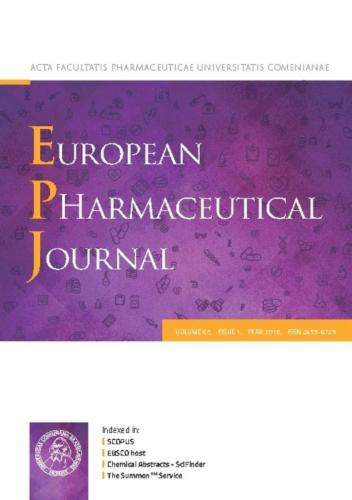E1231/SR647 protects against unilateral renal ischemia-reperfusion injury by modulating SIRT1/FOXO3 interactions with Nrf2 and NFκB pathways
IF 4.3
3区 医学
Q1 PHARMACOLOGY & PHARMACY
引用次数: 0
Abstract
Ischemia is a major contributor to acute kidney injury (AKI), for which current treatment options remain limited. One NAD+-dependent deacetylase that can preserve renal cells is SIRT1. To date, no research has directly explored the effects of E1231, a SIRT1 activator, in the context of renal ischemia-reperfusion (IR) injury. Enhancing NAD+ levels is essential for sustaining SIRT1 activity. Hence, the combined use of E1231 and SR647, a NAD+ precursor, could potentially amplify protective effects by supporting prolonged SIRT1 activation. This study is the first to investigate the therapeutic potential of combining E1231 and SR647 in mitigating unilateral renal IR injury. Rats treated with E1231/SR647 effectively demonstrated reduced tubular damage, inflammation, and necrosis. These improvements correlated with a reduced kidney-to-body weight ratio and increased urine output and flow rate. Additionally, rats with IR injury demonstrated reductions in serum creatinine, BUN, UAER, and cystatin C, as well as urinary NGAL and both serum and urinary KIM-1 levels. On the other hand, elevations in urine creatinine and creatinine CL were recorded. E1231 alone provided moderate functional recovery, which was negated when co-administered with a SIRT1 inhibitor. E1231/SR647 treatment upregulated SIRT1 levels and activity, subsequently enhancing FOXO3 activation. It also boosted Nrf2 levels and activity, upregulating the antioxidant protein expression of HO-1 and NQO1. Furthermore, E1231/SR647 reduced the inflammatory response by inhibiting NFκB activity. In conclusion, E1231/SR647 is a promising therapy that may protect renal function during ischemic events through the modulation of SIRT1/FOXO3 control over Nrf2 and NFκB pathways.

E1231/SR647通过调节SIRT1/FOXO3与Nrf2和NFκB通路的相互作用,保护单侧肾缺血-再灌注损伤
缺血是急性肾损伤(AKI)的主要原因,目前的治疗方案仍然有限。SIRT1是一种能够保护肾细胞的NAD+依赖性去乙酰化酶。迄今为止,还没有研究直接探讨SIRT1激活剂E1231在肾缺血再灌注(IR)损伤中的作用。提高NAD+水平对于维持SIRT1活性至关重要。因此,联合使用E1231和SR647(一种NAD+前体)可能通过支持延长SIRT1激活时间来潜在地增强保护作用。这项研究首次探讨了E1231和SR647联合治疗单侧肾IR损伤的治疗潜力。用E1231/SR647治疗的大鼠有效地显示了小管损伤、炎症和坏死的减少。这些改善与肾体重比降低、尿量和尿流率增加有关。此外,IR损伤大鼠血清肌酐、BUN、UAER和胱抑素C以及尿NGAL和血清和尿KIM-1水平均降低。另一方面,记录尿肌酐和肌酐CL的升高。单独使用E1231可提供中等程度的功能恢复,而与SIRT1抑制剂联合使用则无效。E1231/SR647处理上调SIRT1水平和活性,随后增强FOXO3的激活。它还提高了Nrf2的水平和活性,上调了HO-1和NQO1的抗氧化蛋白表达。此外,E1231/SR647通过抑制NFκB活性降低炎症反应。综上所述,E1231/SR647可能通过调节SIRT1/FOXO3对Nrf2和NFκB通路的控制来保护缺血事件期间的肾功能,是一种有前景的治疗方法。
本文章由计算机程序翻译,如有差异,请以英文原文为准。
求助全文
约1分钟内获得全文
求助全文
来源期刊
CiteScore
9.60
自引率
2.20%
发文量
248
审稿时长
50 days
期刊介绍:
The journal publishes research articles, review articles and scientific commentaries on all aspects of the pharmaceutical sciences with emphasis on conceptual novelty and scientific quality. The Editors welcome articles in this multidisciplinary field, with a focus on topics relevant for drug discovery and development.
More specifically, the Journal publishes reports on medicinal chemistry, pharmacology, drug absorption and metabolism, pharmacokinetics and pharmacodynamics, pharmaceutical and biomedical analysis, drug delivery (including gene delivery), drug targeting, pharmaceutical technology, pharmaceutical biotechnology and clinical drug evaluation. The journal will typically not give priority to manuscripts focusing primarily on organic synthesis, natural products, adaptation of analytical approaches, or discussions pertaining to drug policy making.
Scientific commentaries and review articles are generally by invitation only or by consent of the Editors. Proceedings of scientific meetings may be published as special issues or supplements to the Journal.

 求助内容:
求助内容: 应助结果提醒方式:
应助结果提醒方式:


